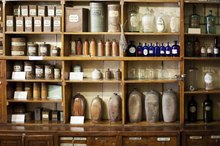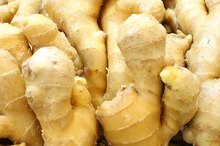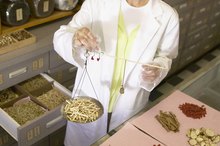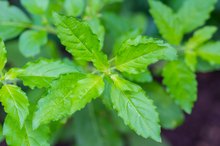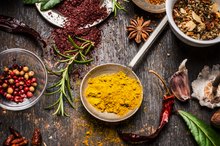What does fact checked mean?
At Healthfully, we strive to deliver objective content that is accurate and up-to-date. Our team periodically reviews articles in order to ensure content quality. The sources cited below consist of evidence from peer-reviewed journals, prominent medical organizations, academic associations, and government data.
- “Journal of Hygiene Research”; Effect of an Active Component from Forsythia Suspensa (Thunb.) Vahl against Respiratory Syncytial Virus in Vitro; Y. Chen, et al.; November 2009
- “Journal of Hygiene Research”; Effect of an Active Component from Forsythia Suspensa (Thunb.) Vahl against Respiratory Syncytial Virus in Vitro; Y. Chen, et al.; November 2009
- “Chinese Journal of Integrative Medicine”; Synergistic Anti-Inflammatory Effect of Radix Platycodon in Combination with Herbs for Cleaning-Heart and Detoxification and Its Mechanism: Y. Le, et al.; June 2011
- “Chinese Journal of Integrative Medicine”; Synergistic Anti-Inflammatory Effect of Radix Platycodon in Combination with Herbs for Cleaning-Heart and Detoxification and Its Mechanism: Y. Le, et al.; June 2011
The information contained on this site is for informational purposes only, and should not be used as a substitute for the advice of a professional health care provider. Please check with the appropriate physician regarding health questions and concerns. Although we strive to deliver accurate and up-to-date information, no guarantee to that effect is made.
Yin chiao, also known as honeysuckle forsythia, is a traditional Chinese mixture of nine herbs developed to combat the symptoms of the common cold. This herbal therapy was widely used during the severe acute respiratory syndrome (SARS) epidemic that plagued many Asian countries in 2003. Always consult a physician before self-medicating with alternative medications.
If you are experiencing serious medical symptoms, seek emergency treatment immediately.
Kampo Medicine
Yin chiao is a type of kampo, or kanpo, medicine, which is a Japanese adaptation of traditional Chinese medicine, developed in the early 1700s. Yin chiao consists of nine herbs, including honeysuckle, forsythia, balloon flower, peppermint, edible burdock, crested grass, Japanese mint, soy bean and licorice root.
Pulmonary Fibrosis
Natural Homeopathic Remedies for Interstitial Lung Disease
Learn More
A study published in the March 2007 issue of “Phytotherapy Research” investigated the preventative effects of yin chiao on pulmonary fibrosis, the scarring and inflammation of the lungs, in experimental rats. The researchers induced pulmonary fibrosis in the test animals and supplemented half of them daily with 1,000 mg of yin chiao for each kg of body weight; whereas, the other half served as a control group, which received a placebo. The researchers concluded that yin chiao treatment displayed antioxidant and anti-inflammatory effects and inhibited collagen formation in lung tissue.
Anti-Inflammatory Effect of Yin Ciao
An article appearing in the June 2011 issue of the “Chinese Journal of Integrative Medicine” explored the anti-inflammatory effect of the balloon flower, Platycodi grandiflori radix, using a rat model of a common respiratory disease, COPD (chronic obstructive pulmonary disease) 2. The researchers divided 40 rats into four groups: a placebo group and three others treated with balloon flower alone or in combination with forsythia, or with forsythia and honeysuckle. The study found that all treatments significantly reduced lung inflammation as compared to the control group; but, the combination of balloon flower, forsythia and honeysuckle showed the best results.
- An article appearing in the June 2011 issue of the “Chinese Journal of Integrative Medicine” explored the anti-inflammatory effect of the balloon flower, Platycodi grandiflori radix, using a rat model of a common respiratory disease, COPD (chronic obstructive pulmonary disease) 2.
- The researchers divided 40 rats into four groups: a placebo group and three others treated with balloon flower alone or in combination with forsythia, or with forsythia and honeysuckle.
Active Ingredient of Forsythia
Herbal Alternatives to Prednisone
Learn More
A study included in the November 2009 issue of the “Journal of Hygiene Research” identified a component of forsythia, named LC-4, which is responsible for the plant’s antiviral effects 1. The authors isolated the compound and found that LC-4 inhibited the replication of respiratory syncytial virus (RSV) within cells. The study concluded that LC-4 is a safe and effective antiviral medication.
Related Articles
References
- “Journal of Hygiene Research”; Effect of an Active Component from Forsythia Suspensa (Thunb.) Vahl against Respiratory Syncytial Virus in Vitro; Y. Chen, et al.; November 2009
- “Chinese Journal of Integrative Medicine”; Synergistic Anti-Inflammatory Effect of Radix Platycodon in Combination with Herbs for Cleaning-Heart and Detoxification and Its Mechanism: Y. Le, et al.; June 2011
Writer Bio
Sam Lupica began scientific writing in 2007, specializing in physiology, toxicology and reproductive biology. He teaches chemistry and biology, and has published several journal articles in "Aquaculture Research" as well as informational articles in online publications. Lupica is finishing a Ph.D. in medical science and has a Master of Science in physiology and pharmacology from the University of Toledo College of Medicine.
